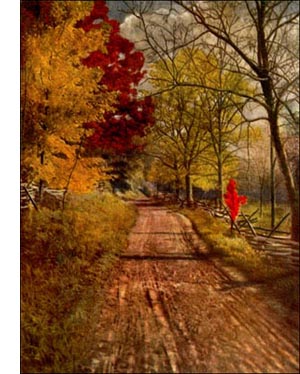Shingle Oak or Laurel Oak Tree
 The Shingle Oak, or Laurel Oak (Q. irnbricaria, Michx.)A tree 60 to 100 feet high, pyramidal, becoming round headed at length; branches slender. Bark pale brown, scaly; twigs smooth. Wood reddish brown, heavy, hard, coarse grained. Buds small, acute, brownish. Leaves deciduous, alternate, oblong, usually entire, 4 to 6 inches long, 1 to 2 inches wide, shining, dark green above, paler and pubescent beneath; petioles short. Flowers in May, with opening leaves, tomentose, greenish. Acorns biennial, 2 to 3 inch long, stalked, solitary or paired; nut broad, short, pointed; cup shallow, scaly, reddish; kernel bitter. Preferred habitat, rich bottom lands. Distribution, Pennsylvania to Georgia; west to Nebraska and Arkansas. Uses: Lumber for clapboards and shingles. A hardy and beautiful park tree.
The Shingle Oak, or Laurel Oak (Q. irnbricaria, Michx.)A tree 60 to 100 feet high, pyramidal, becoming round headed at length; branches slender. Bark pale brown, scaly; twigs smooth. Wood reddish brown, heavy, hard, coarse grained. Buds small, acute, brownish. Leaves deciduous, alternate, oblong, usually entire, 4 to 6 inches long, 1 to 2 inches wide, shining, dark green above, paler and pubescent beneath; petioles short. Flowers in May, with opening leaves, tomentose, greenish. Acorns biennial, 2 to 3 inch long, stalked, solitary or paired; nut broad, short, pointed; cup shallow, scaly, reddish; kernel bitter. Preferred habitat, rich bottom lands. Distribution, Pennsylvania to Georgia; west to Nebraska and Arkansas. Uses: Lumber for clapboards and shingles. A hardy and beautiful park tree.The pyramidal shape of the young shingle oak and the horizontal and drooping postures of its slender branches remind us strongly of the pin oak. The "pins," however, are missing, as we will observe when the tree is bare; and the foliage in summer quickly corrects any false impressions. Even from a distance the foliage masses of the two trees differ distinctly. The clefts and angles that make so large a part of pin-oak leaves are all missing in those of the shingle oak. Willow or peach leaves are more like these plain-margined ones. The wayfaring man will never imagine this tree to be an oak until he sees the acorns.
The shingle oak grows quickly, as the long, leafy shoots in early summer prove. The star-shaped arrangement of the leaves on the short branches is most interesting, and there is a wavy curl in the margins, as if they would each turn aside to let the sunlight in to the branches less favourably situated. So little interference is there that the tree is leafy to its central shaft, but the head is still open.
The shingle oak has a fashion of crossing with related species, and thus producing hybrids from seed. The black oak and this one are believed to be the parents of a rather widely distributed form, now called Quercus Leana. Crosses with the pin oak and the jack oak also occur.
The summer beauty of this tree is quite sufficient to commend it to all planters. It is covered in spring with pink and silver, the leaves before they expand are curled in tight little tubes. In summer they are leathery and shining. In autumn they change to rich reds, and the veins and midrib are touched with a more fiery hue. Truly, there is no season when the shingle oak is not handsome in any congregation of trees.
Another Laurel Oak (Quercus laurifolia, Michx.), with leathery leaves like laurel, grows to large size in swamp borders, and along streams in the coast regions, from Virginia to Louisiana. It is the common "water oak" of streets and yards, adorning them with its graceful columnar trunks and lustrous dark green, almost evergreen, foliage. Only the live oak, its near associate, exceeds it in beauty. It is commonest in eastern Florida, and here it reaches its greatest height. Unfortunately, it is not hardy in the North.